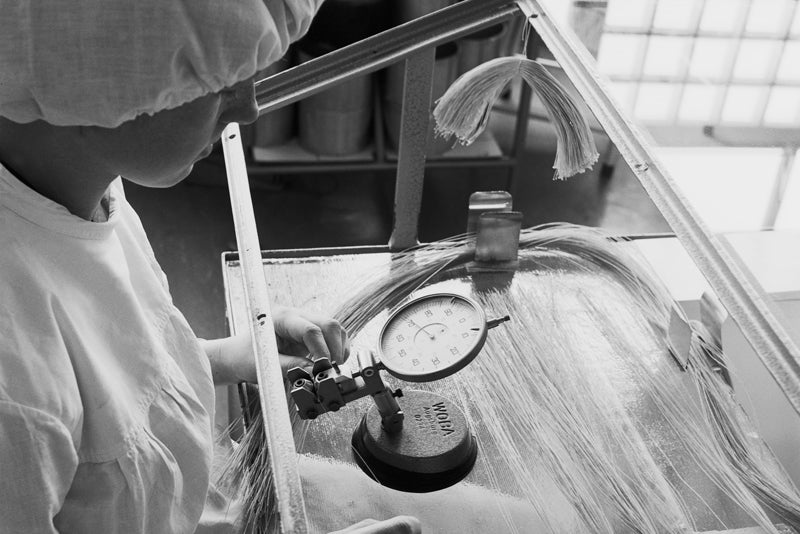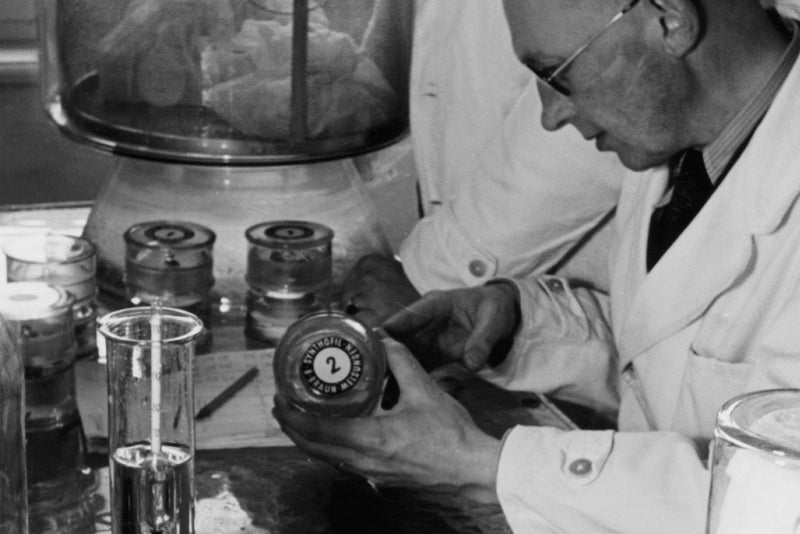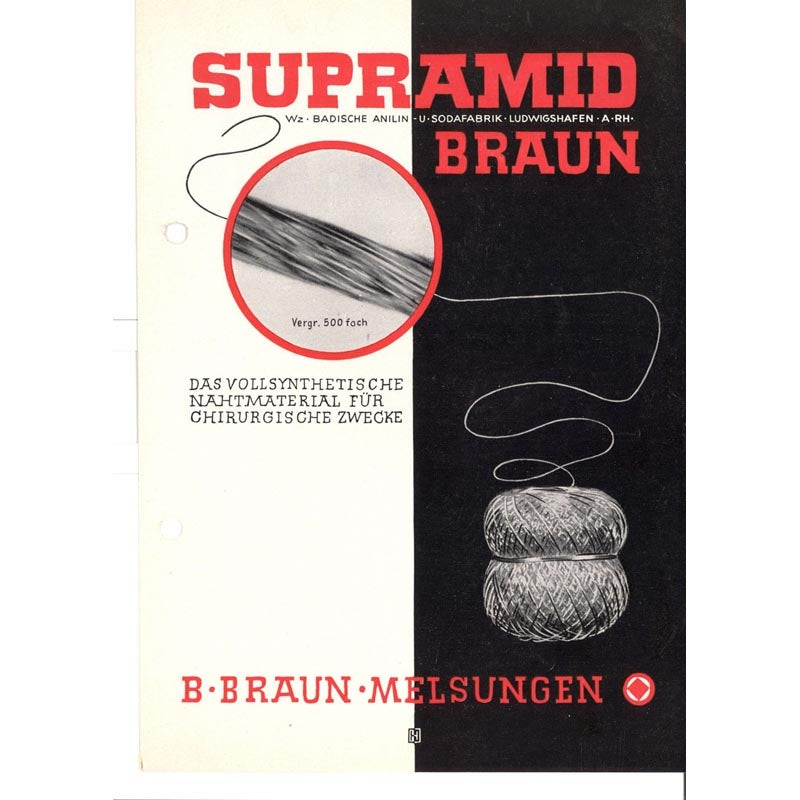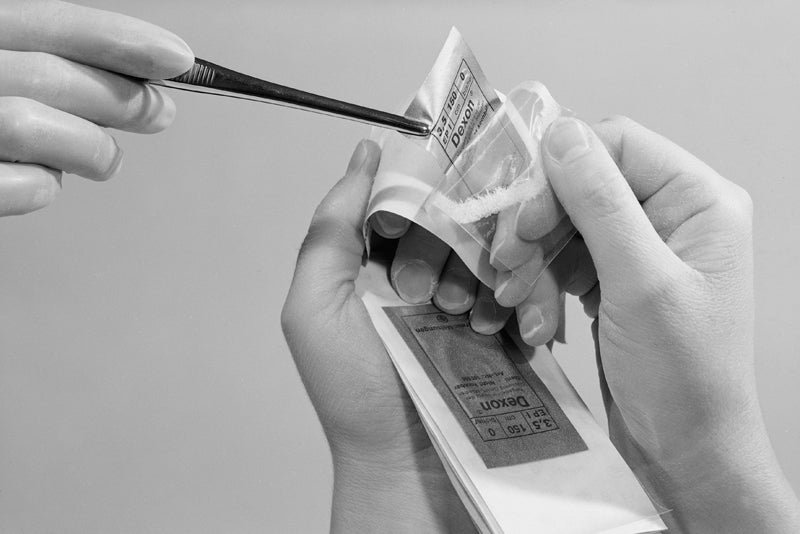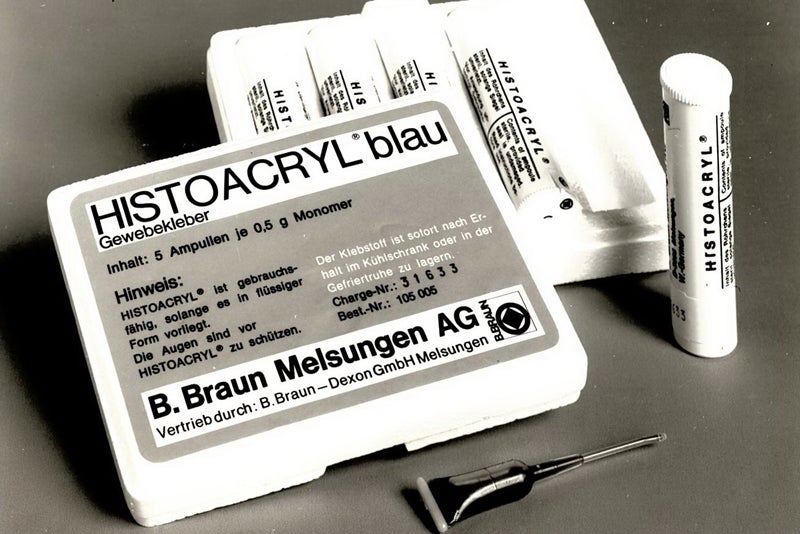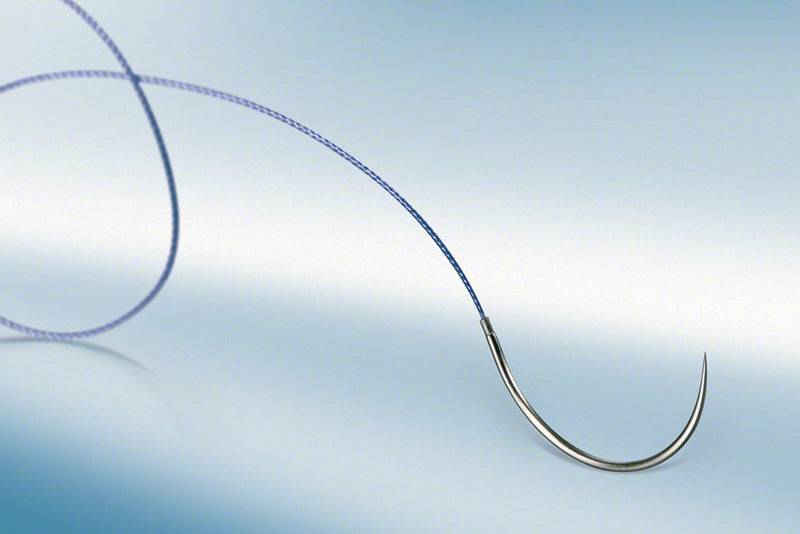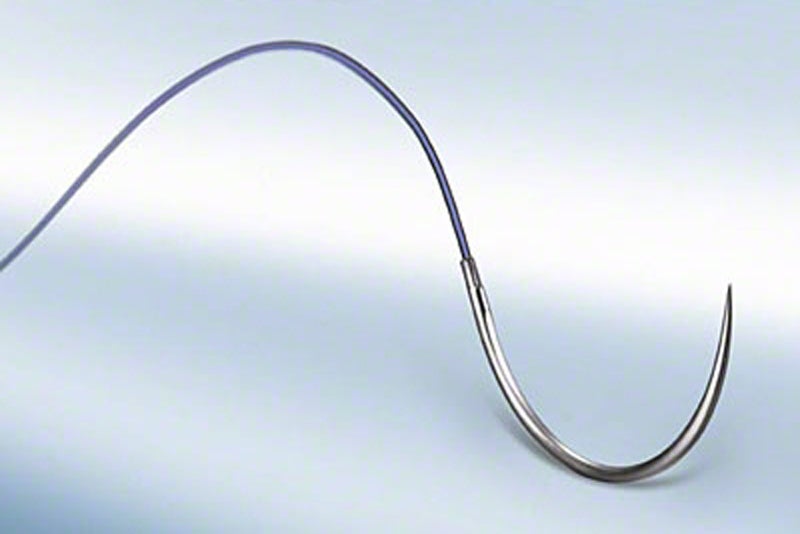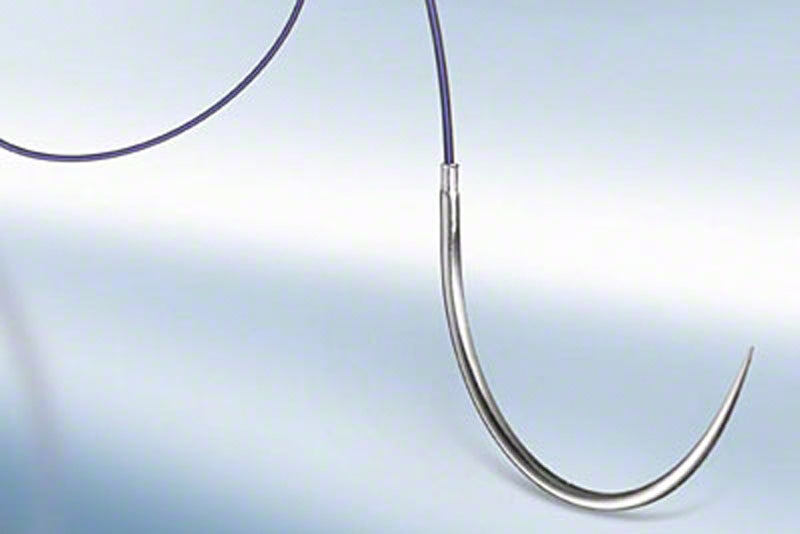A revolutionary idea for wound closure
Open, operate, close, remove stitches: everyone is familiar with the wound closure procedure. Wound treatment is a field of therapy with a long tradition at B. Braun. Guaranteeing the sterility of sutures posed a big problem until the beginning of the 20th century, because sutures only close the wound. It is just as important to ensure that no infections endanger the healing process that follows.
Carl Braun, Julius Wilhelm Braun’s grandson, traveled to foreign countries and met interesting people. One of them was Dr. Franz Kuhn, a surgeon from Kassel who was frustrated by the problem of wounds getting infected after closing. There must be a solution, he thought. He told Carl Braun about his idea for sterile, absorbable suture material. Commonplace today, a revolutionary idea back then. In 1908 came the sensational news from B. Braun: for the first time ever, sterile suture material can be produced and sold. What’s more, the material is fully absorbable, which means it dissolves when the wound is almost healed.
This was only one milestone in the history of wound care therapy. There were more to follow: in 1935, the non-absorbable synthetic suture material Synthofil A was launched successfully. Some further examples of modern wound management are Supramid, a nylon-based suture material; Histoacryl, a tissue adhesive for the closure of skin wounds; and Monosyn, a synthetic absorbable suture material made of glyconate. New, revolutionary procedures are still being developed to this day through the exchange of ideas between scientific research and clinical practice.

